New Zealand, composed of two main islands with intense volcanic activity, was separated from the ancient supercontinent Gondwana around 100 million years ago. This long period of geographic isolation led to the evolution of many unique and endemic species—especially birds.
Today, about a quarter of New Zealand’s bird species and the majority of its insect species are found nowhere else on Earth. Before the arrival of humans, there were no land mammals in New Zealand, which allowed birds to evolve without the need for flight or natural predators. Unfortunately, many bird species went extinct after humans introduced mammals such as rats and cats.
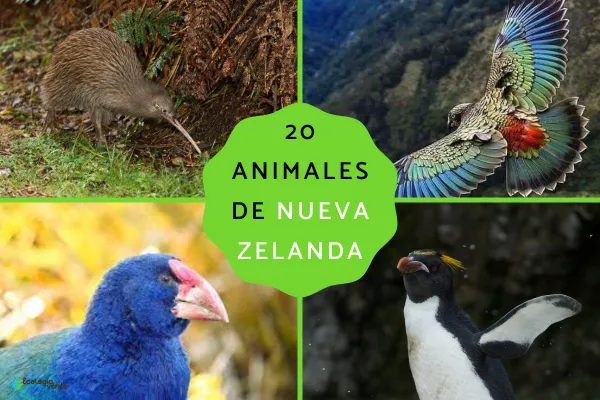
This article explores 20 of New Zealand’s most fascinating animals, highlighting the country’s extraordinary biodiversity.
The kiwi is New Zealand’s national symbol—a flightless, nocturnal bird with soft, hair-like feathers and a long beak tipped with nostrils. Kiwis have excellent senses of smell and touch, thanks to facial whiskers and sensitive nostrils.
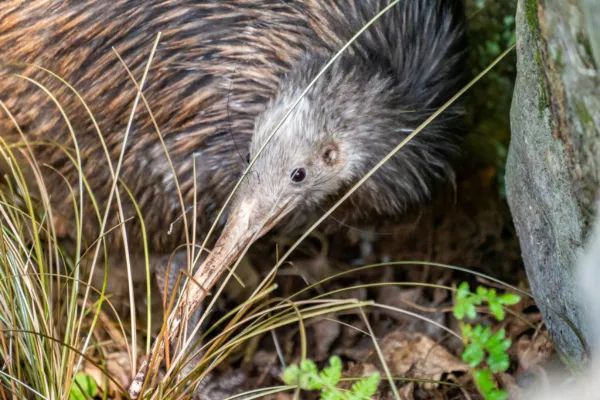
Unlike flying birds, their bones contain marrow, and they lay the largest egg in proportion to their body size. Kiwi populations are estimated at fewer than 50,000 individuals and are declining rapidly.
Endemic to New Zealand, the blue duck features grayish-blue plumage and prefers fast-flowing mountain rivers. It is a strong swimmer but a poor flyer. Habitat loss and introduced predators have pushed this species to the brink of extinction.
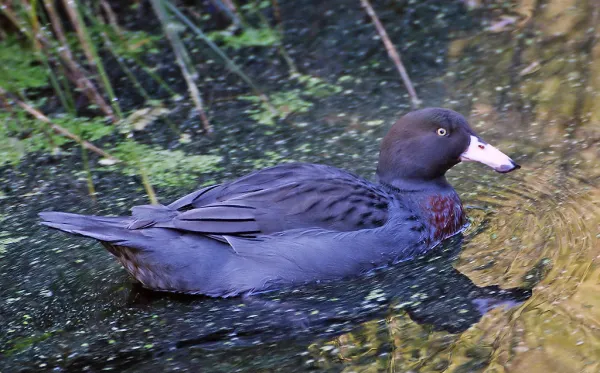
The kaka is a forest parrot with brown and orange feathers. Its name comes from the Māori word for parrot. It lives among tree canopies and rocky areas, feeding on nectar and flowers. There are two subspecies: the North Island kaka and the South Island kaka.
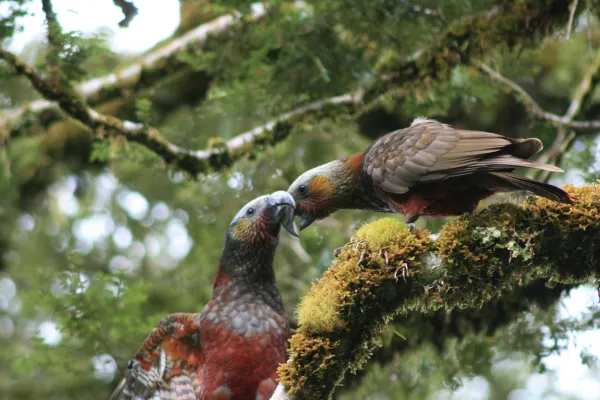
The takahe is a large, flightless rail with stunning iridescent blue-green plumage. It was once thought extinct until rediscovered in 1945. Takahes are slow-moving ground birds, now considered critically endangered due to habitat loss and hunting.
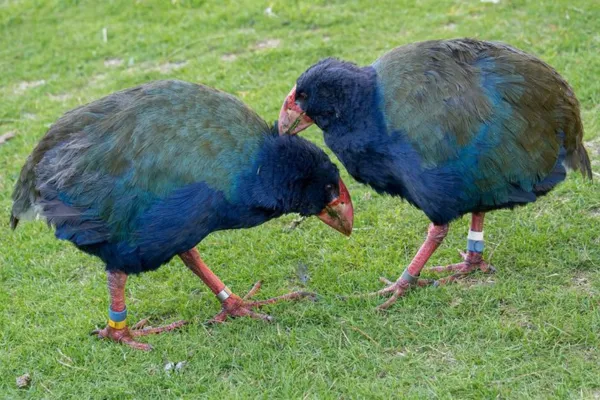
The kakapo is the world’s only flightless and nocturnal parrot. Reaching up to 60 cm in length, it has owl-like facial features and light, fluffy feathers. Female kakapos choose their mates, and the species can live for decades. Once believed extinct, only 86 individuals were rediscovered in 2005.
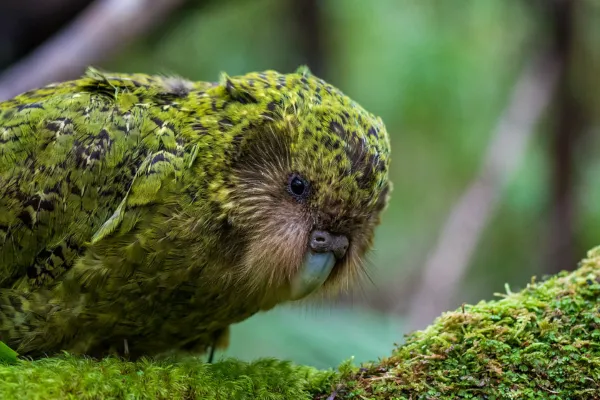
Wetas are large, nocturnal insects unique to New Zealand. Before the arrival of mammals, they filled ecological roles similar to rodents. Their populations declined with the introduction of rats and mice. Wetas have strong mandibles used for digging and feeding on insects and organic debris.
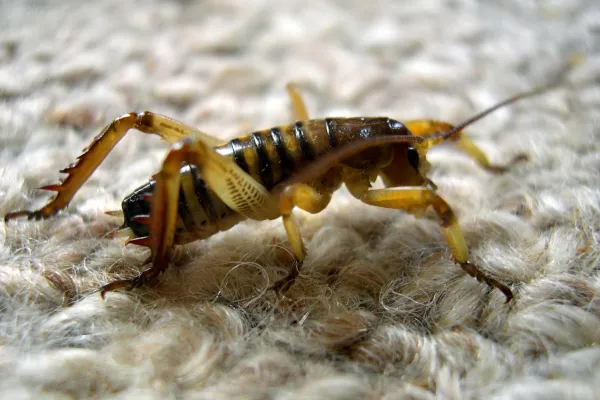
Kea are alpine parrots native to New Zealand’s South Island, where glaciers and mountain ranges dominate. They have olive-green plumage with brilliant red underwings. Kea are intelligent, curious, noisy, and playful—but are considered vulnerable due to human conflict and habitat changes.
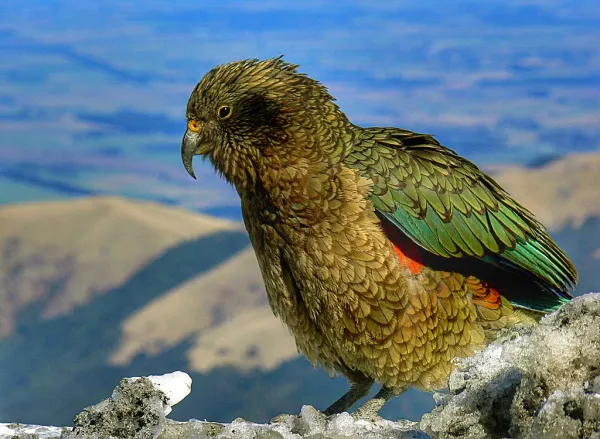
This rare penguin species is recognized by its yellow eyebrow crests and white cheeks. Standing around 50 cm tall, they spend most of their lives at sea and only return to land to breed. They are shy and mostly active at night.
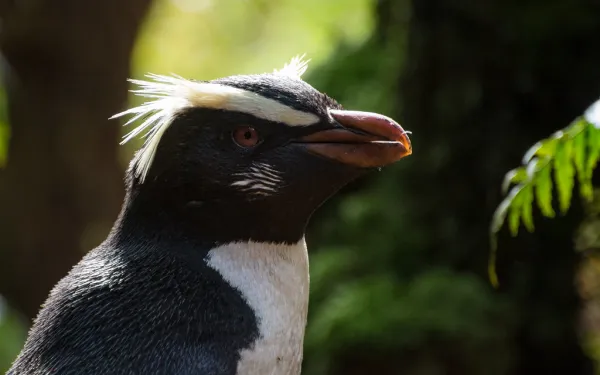
One of New Zealand’s largest animals, males can reach up to 3.5 meters. These sea lions breed on the subantarctic Auckland Islands. Females are cream to white in color, while males are dark brown. They’re highly protective of their pups and will even shelter them in forests. Their populations are shrinking due to illegal hunting.
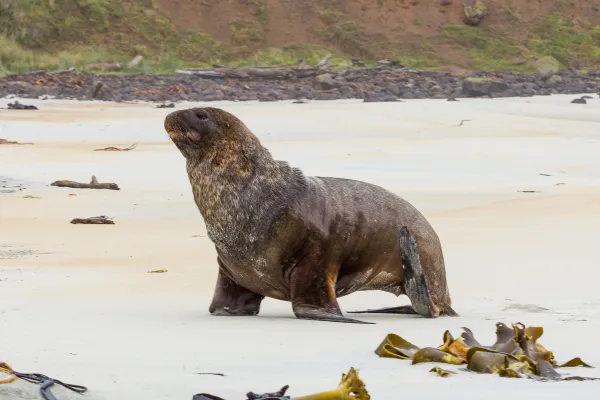
The royal albatross is one of the world’s largest seabirds, with a wingspan up to 3 meters. Adapted for life at sea, it has salt glands to excrete ocean water. Though excellent fliers and swimmers, they are clumsy on land. They breed only on New Zealand’s coastal areas.
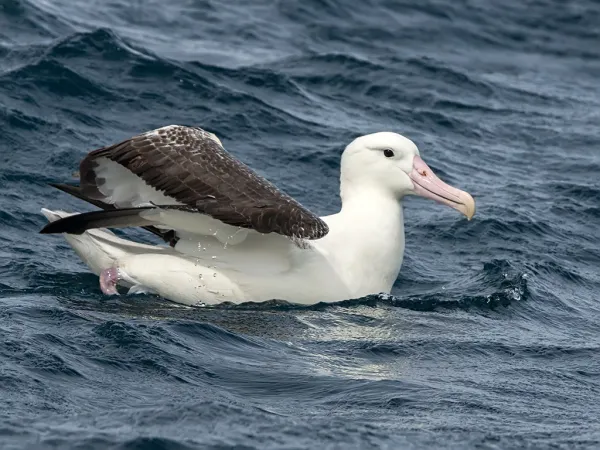
If you're eager to explore even more of New Zealand’s unique fauna, here are 10 additional examples:
Kereru (Hemiphaga novaeseelandiae) – The native New Zealand pigeon.
Owls (Family: Strigidae) – Includes native nocturnal species.
Endemic Horseflies (Family: Tabanidae) – Found only in New Zealand.
Jellyfish (Subphylum: Medusozoa) – Common in New Zealand waters.
Tuatara (Sphenodon spp.) – A living fossil reptile, endemic to New Zealand.
Sclater’s Penguin (Eudyptes sclateri) – Endemic and endangered.
Snares Penguin (Eudyptes robustus) – Found only on the Snares Islands.
Moa (Moa spp.) – Extinct giant flightless birds once native to the islands.
Black-fronted Tern (Sterna striata) – An endemic coastal bird.
Hector’s Dolphin (Cephalorhynchus hectori) – One of the smallest dolphin species in the world.
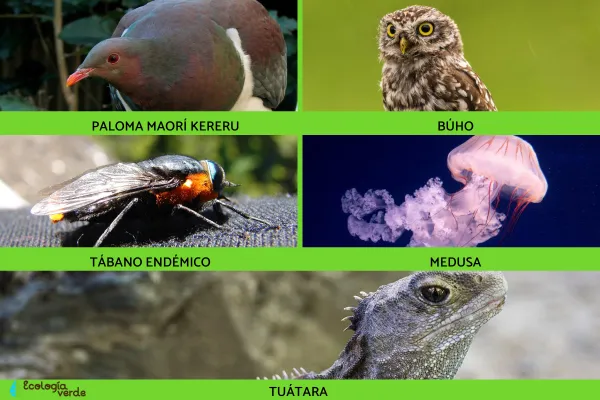
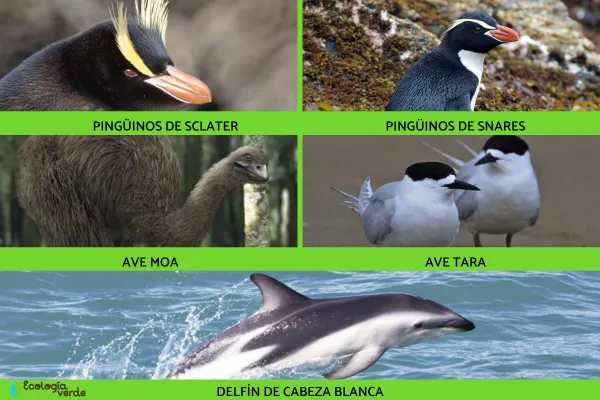
Conclusion
New Zealand’s wildlife is as isolated and unique as the islands themselves. From flightless birds and ancient reptiles to intelligent parrots and giant insects, the diversity of species reflects millions of years of evolution in isolation. Many species remain vulnerable, making conservation efforts critical.
For more fascinating articles like this, be sure to explore our [Wild Animals] category.
Bibliography
National Geographic (2015). Heritage of Humanity: Indonesia, Australia and the Pacific. Spain: Editec.
Braswell, T., (2001) Eudyptes pachyrhynchus. University of Michigan, Museum of Zoology. Available at: https://animaldiversity.org/accounts/Eudyptes_pachyrhynchus/
The Society of Marine Mammalogy (s.f.) Phocarctos hookeri. Available at: https://marinemammalscience.org/facts/phocarctos-hookeri/
Mackerras, I. (1956). Tabanidae (Diptera) of New Zealand. Transactions of the Royal Society of New Zealand Vol, 84, Part 3, pp. 581-610.
The IUCN Red List of Threatened Species. (2016). Nestor productus. Available at: https://www.iucnredlist.org/species/22684834/93049105
animal tags: Animals Zealand
We created this article in conjunction with AI technology, then made sure it was fact-checked and edited by a Animals Top editor.